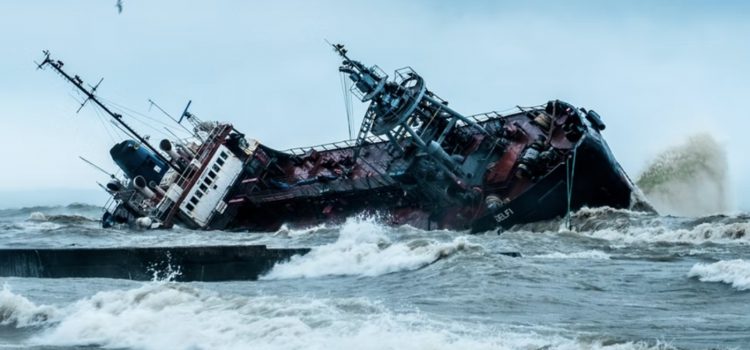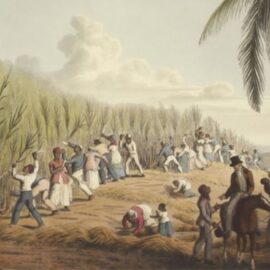

This article is an excerpt from the Shortform book guide to "Endurance" by Alfred Lansing. Shortform has the world's best summaries and analyses of books you should be reading.
Like this article? Sign up for a free trial here .
When did the Endurance sink? How did Ernest Shackleton help his crew survive the shipwreck?
In the book Endurance, journalist Alfred Lansing tells the story of Ernest Shackleton’s failed expedition to Antarctica. His ship, the Endurance, sank after getting trapped between ice floes five months into the expedition.
Read below to learn when the Endurance sank and how Shackleton got his crew out of the mess.
Surviving the Ice Pack’s Pressure
When did the Endurance sink? On July 16, 1915, almost a year after the Endurance set sail, Shackleton’s crew saw that the ice pack they were trapped in had fragmented. The individual floes on the pack moved with the wind, creating pressure on the floe surrounding the Endurance and on the ship itself. Around them, ice floes crashed into each other continuously, lifting into the air. Throughout August of 1915, the Endurance withstood the ice, and Lansing believes this gave the men confidence that the Endurance could survive anything.
Abandoning the Endurance
Despite the men’s optimism, the ice pack struck the ship with increasing intensity several times, tearing its sides. Finally, on October 23, the Endurance became trapped by three ice floes that split it in half. Lansing recounts how the crew tried for three days to save the ship.
On the second day, the side of the ship was completely deformed by the ice. Shackleton ordered the men to lower all the essential items onto a nearby floe. On day three, more water reached the deck and froze there, weighing the ship down.
On October 27, 1915, nine months after the ship got stuck in the ice, they realized it was a losing battle and decided to leave the ship before it sunk completely. They took 49 huskies, essential gear, and two lifeboats down to the ice. They set up camp on a floe, but they quickly had to move again when it started breaking up. Lansing describes how, less than an hour after the last man had gotten off the ship, a piece of ice pierced the side of the Endurance, and the water coming in caused it to partly submerge.
They were now in the Weddell Sea, halfway between the South Pole and the nearest populated town 1,200 miles away. Shackleton planned to get to Paulet Island, which was 346 miles away—in 1903, the crew of another ship crushed by ice had awaited rescue there, and they had left stores of food on the island in case anyone else found themselves stranded in the region.
Leaving the Ship Area
After getting some rest after several days of fighting the ice, they left the ship on October 30 and headed on foot in the direction of Paulet Island, pulling their lifeboats and supplies. Lansing says that, before leaving, they tied the Union Jack to a still visible part of the ship so that it would go down with its colors flying.
Living on the Ice Floes
After leaving the ship, Shackleton and his crew set up several different camps on ice floes while they waited for better weather conditions to continue their journey. They had to move camps often because their floe cracked or melted, and they eventually abandoned the floes and got on their boats when the ocean drift took them away from the islands they were aiming for. Lansing narrates their moves in detail, as well as the mood changes among the crew during this time.
(Shortform note: The term “ice floe” refers to any piece of ice that is held together. The smallest ice floes are called small ice cakes, and they’re about two meters (6.5 feet) wide. The largest ice floes are called floe giants, and they can be over 10 kilometers (6.2 miles) wide.)
Ocean Camp
Their first ice floe camp was Ocean Camp. Advancing by foot and dragging sledges and boats, they managed to walk only two miles in two days from the place the Endurance had sunk. When the ice became impossible to get through with the sledges and boats, they decided to camp on a massive floe and let the drift take them away from the ice pack surrounding Antarctica.
While they lived at Ocean Camp, they went back to the Endurance several times to retrieve the third lifeboat, food stores, and personal items. Even though the ship was filled with water, some items were still salvageable. But Lansing explains that they stopped the trips back to the ship when a blizzard carried the entire floe north, away from Antarctica.
They made good progress thanks to the drift. The blizzard took them 16 miles in two days, and then the wind changed as summer drew closer and it became stronger. They were confident that they could reach Paulet Island, but they also made several alternate plans in case the wind took them in a different direction.
On November 21, they saw the Endurance sink entirely below the ice and water—their last connection to civilization and the only thing other than ice as far as the eye could see.

———End of Preview———
Like what you just read? Read the rest of the world's best book summary and analysis of Alfred Lansing's "Endurance" at Shortform .
Here's what you'll find in our full Endurance summary :
- The story of the Endurance, an expedition ship that sunk on its way to Antarctica
- The crew's journey of survival and their search for rescue
- How Ernest Shackleton lead the crew to safety






